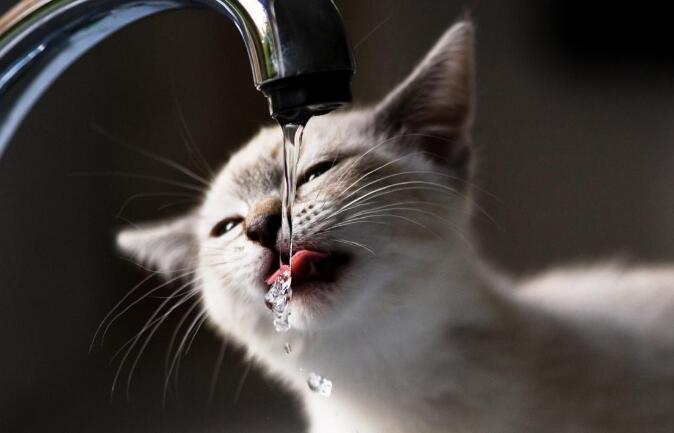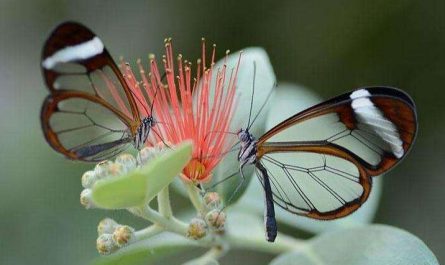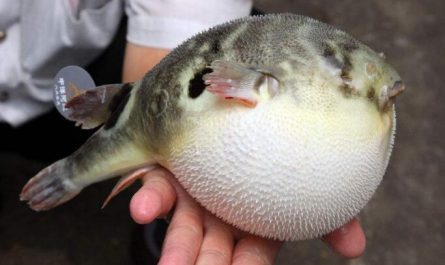Why cats always drink water and not eat food
1. Acute gastroenteritis
Symptom characteristics:
Affected cats show a sense of thirst, and vomiting occurs when they lie next to a water bowl without drinking or after drinking. There is bloodshot and yellow-green liquid in the vomit. Animals appear to be highly dehydrated, with sunken eyeballs and decreased skin elasticity. Increased defecation frequency, thin and smelly feces, and a lot of dirty feces around the anus. Animals resisted abdominal examination, especially vomiting when palpating the stomach.
How to treat?
The basic principle is to remove irritants, provide measures to promote mucosal recovery, and correct dehydration. First of all, you should limit your diet, feed a small amount of sugar and salt rice soup, small amounts for many times. Feed high-sugar, low-fat, low-protein and easy-to-digest liquid foods. Anticholinergic drugs can reduce gastric peristalsis and spasm, reduce the excitement of the parasympathetic nerve of the smooth muscle of the gastric wall, reduce gastric acid secretion and relieve vomiting. Can give 5% glucose saline, 40-60 ml per kilogram of body weight per day. To replace the lost body fluids. For general gastritis, take metoclopramide tablets orally, 2 to 3 times a day, 0.5 mg/kg body weight each time. At the same time, intramuscular injection of streptomycin, 2 times a day, 10 mg per kilogram of body weight each time, the oral dose should be increased as appropriate.
2. Feline pan-leukopenia
High fever, vomiting, and diarrhea caused by pan-leukopenia can also cause dehydration. Feline panleukopenia, also known as cat plague or feline infectious enteritis, is an acute high-contact infectious disease in cats and felines caused by cat pan-leukopenia virus. The clinical manifestations are characterized by high fever, vomiting, diarrhea, dehydration, and reduction of circulating white blood cells and enteritis. The incubation period of this disease is 2-9 days, the most acute type, the animal collapses immediately without clinical symptoms, and is often mistaken for poisoning. The acute type has a short course, due to secondary bacteremia and endotoxemia, accompanied by small intestine injury, usually death within 24 hours of infection, and the subacute type has a course of about 7 days. The body temperature of the first fever was 40℃, and it dropped to room temperature in about 24 hours. After 2 to 3 days, the body temperature rose again, showing a biphasic fever type, and the body temperature reached 40℃. Sick cats are lack of energy, rough coat, anorexia, vomiting, hemorrhagic enteritis and dehydration symptoms are obvious, purulent secretions from the eyes and nose, pregnant female cats infected with this disease, can cause miscarriage, stillbirth and other reproductive disorders.
3. Renal insufficiency
In the case of renal insufficiency, the cat’s urine will be abnormal and will want to drink a lot of water. There are many reasons for cat’s renal insufficiency. If it is caused by gingivitis or alveolar abscess, the cat will feel very painful and cannot be treated without anesthesia. See a doctor as soon as possible.
4. Diabetes
If a cat has diabetes, it will become dehydrated, become weak, and drink a lot of water. At the beginning of the onset, the cat’s symptoms are not obvious, except that they will have a strong appetite, drink a lot of water, and have a lot of urine, but they will quickly lose weight, weight loss and dehydration. As the disease progresses, they will have loss of appetite and listlessness. , Body weakness, walking shaking, further deterioration, there will be serious symptoms such as thinning of the skin and easy injury, jaundice, coma, and acute inflammation. If you find a similar situation, please seek medical attention immediately to avoid deterioration. Letting it develop can be life-threatening.
Diabetes can be controlled and relieved by treatment, but it can be life-threatening if it is left untreated. The earlier treatment is started, the more likely the condition will be controlled and relieved. Relief does not mean cure, diet and lifestyle must always be controlled.
How to raise cats
1. First prepare daily necessities for it (kitten food, shelter, etc.). You can also give it a nice name.
2. Establish a good relationship with cats. Cats are not like dogs. They do not want to be “occupied” by others. Their independence is never allowed to be deprived. To establish a good relationship with a cat, you should not own it as property, but try to treat it as a member of the family. The cat is willing to spend time with you. In addition to requiring simple food, it does not ask for any rewards, and must cultivate affection with the cat. If the owner understands it and appreciates it, it is acceptable and will return with affection and respect.
3. Understand the habits of cats. Good gestures, the most obvious gesture of good gestures is leisurely wagging your tail, or lying on the ground with your feet upright, waiting for you to pat it. When it wants to act coquettishly with you, it will rub its body beside it, or step on the owner’s body with its left and right feet. An angry action. When the cat is angry, the whole body will be obviously tight. The tail straight and the hair stand up are warnings. If the body is squatting slightly and taking a forward position, it is about to attack. The cat’s call, the lazy and gentle “meow~”, is to greet you. “Meow~ㄠ” with an elongated ending and hurriedly following you may be hungry or want to drink water. You can check the feed bowl or the litter box to see if it is time to clean it. Snoring from the throat is satisfying (it may also be sickness, but be careful, but this is not common). If it is a rough howling of “Mi~ㄠ”, it may be complaining. When a cat calls to you, you may wish to listen carefully. When it finds that you will pay attention to its expression, it will be more willing to talk to you. As time goes by, you will better understand its cat speech. .
4. Follow the cat’s hair and gently touch the top of the cat’s head, around the neck, and the entire abdomen. The cat will make a gurgling sound because it is comfortable. When the owner touches it, a coquettish cat will rub its head against the owner’s hand, which means that it likes the feeling of being loved.
5. Cat’s emotions are very sensitive and delicate. Anything that is too reckless or unexpected may scare it. Therefore, before holding the cat, it is best to touch the cat’s head lightly, let it see your hand, and then slowly pick it up, so as not to cause the cat’s anxiety.






